Abstract
Methicillin-resistant Staphylococcus aureus (MRSA) strains show an unusual type of resistance at 37°C; only a small subpopulation of cells is resistant to the β-lactam antibiotics. Incubation in the presence of methicillin (MET), however, results in the emergence of a homogenous population highly resistant to MET. The purpose of the present study was to determine whether MET, despite its lack of killing effect on MRSA, would promote the bactericidal effect of gentamicin (GM), as demonstrated for MET-susceptible strains of S. aureus. Eleven epidemiologically distinct strains of MRSA were incubated with MET at various concentrations, in the presence or absence of sub-bactericidal concentrations (1/5 or 1/10 of the minimal bactericidal concentration) of GM, and tested for the synergistic action of both antibiotics by three different methods. Population analysis of the 11 strains in the presence of high concentrations of MET showed that the addition of GM at 1/5 or 1/10 of its minimal bactericidal concentration resulted in marked killing of the 11 strains. Time-kill curves obtained with 32 μg of MET per ml and GM at 1/5 or 1/10 of its minimal bactericidal concentration confirmed this synergistic killing at 24 h. These results were further documented by the checkerboard method on two strains. We conclude that the synergism between MET and GM, previously demonstrated for MET-susceptible S. aureus, holds true for MRSA as well and that it can be demonstrated at sub-bactericidal concentrations of GM.
Full text
PDF
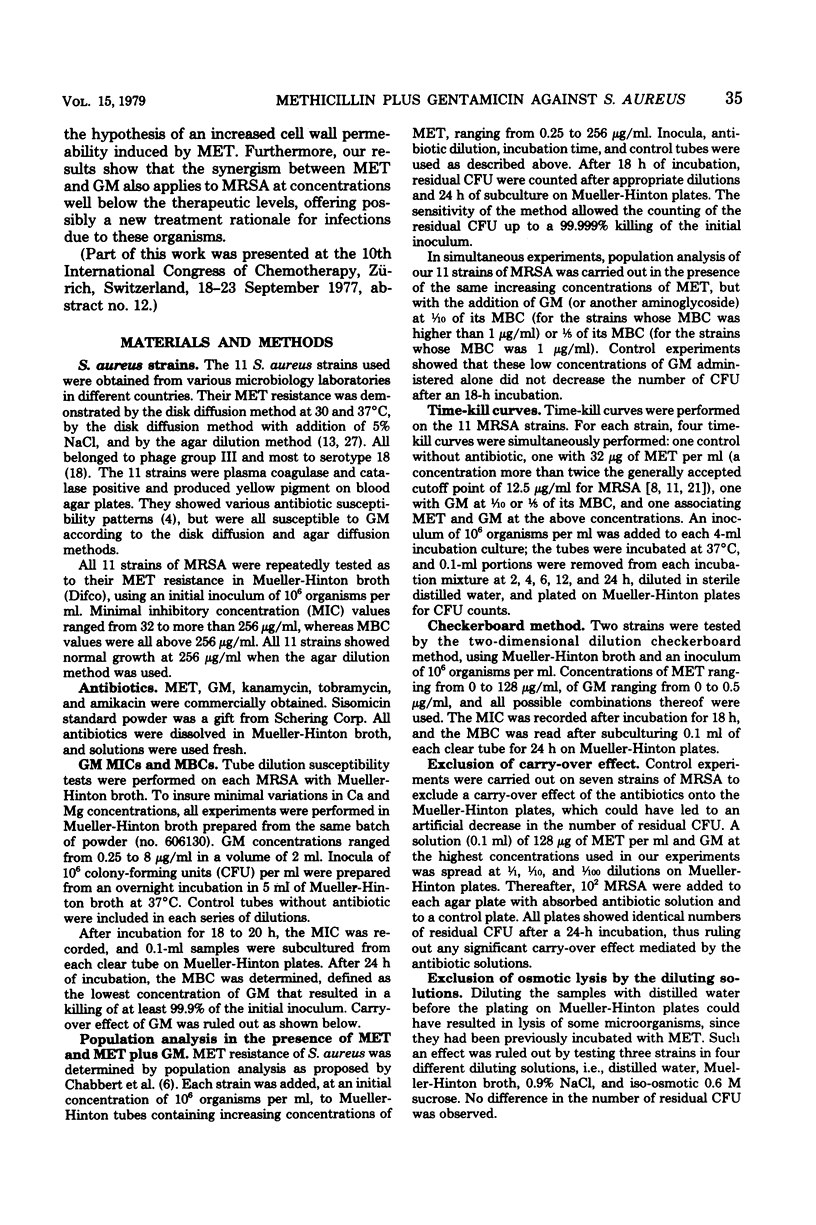
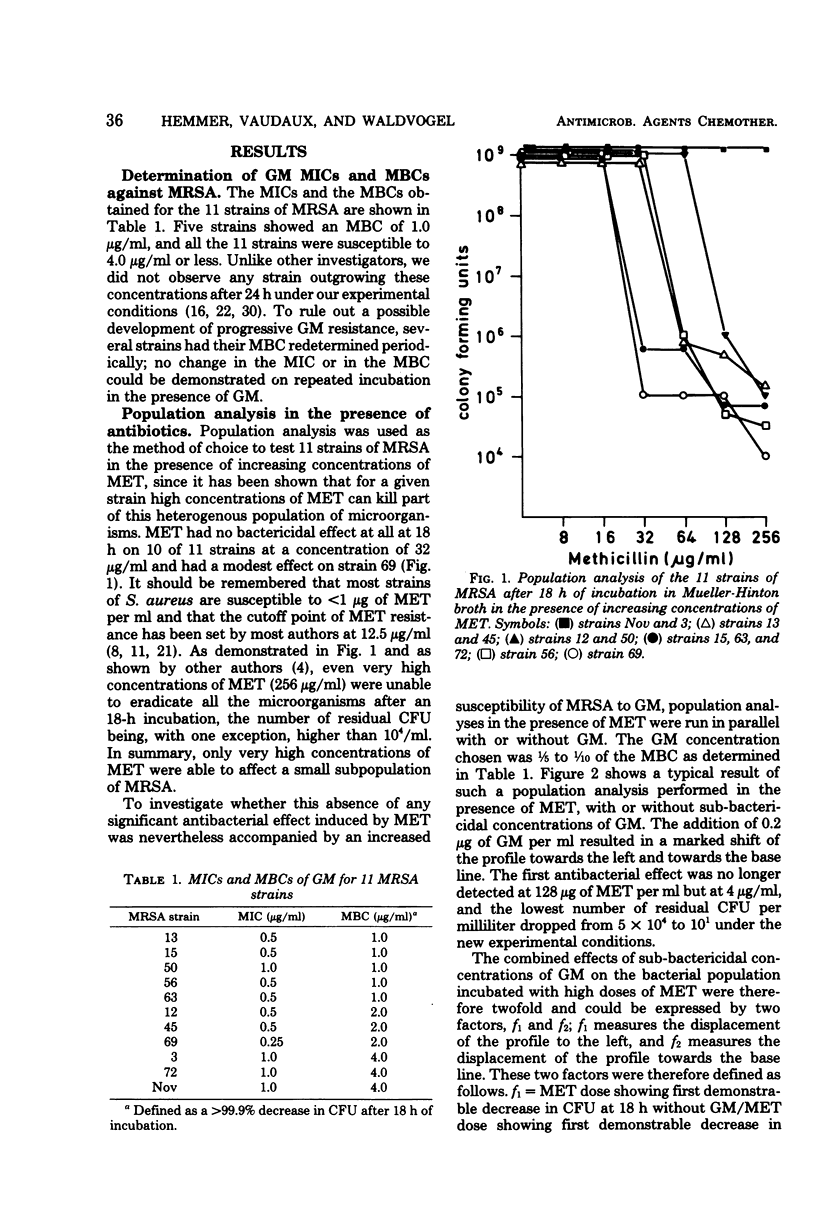
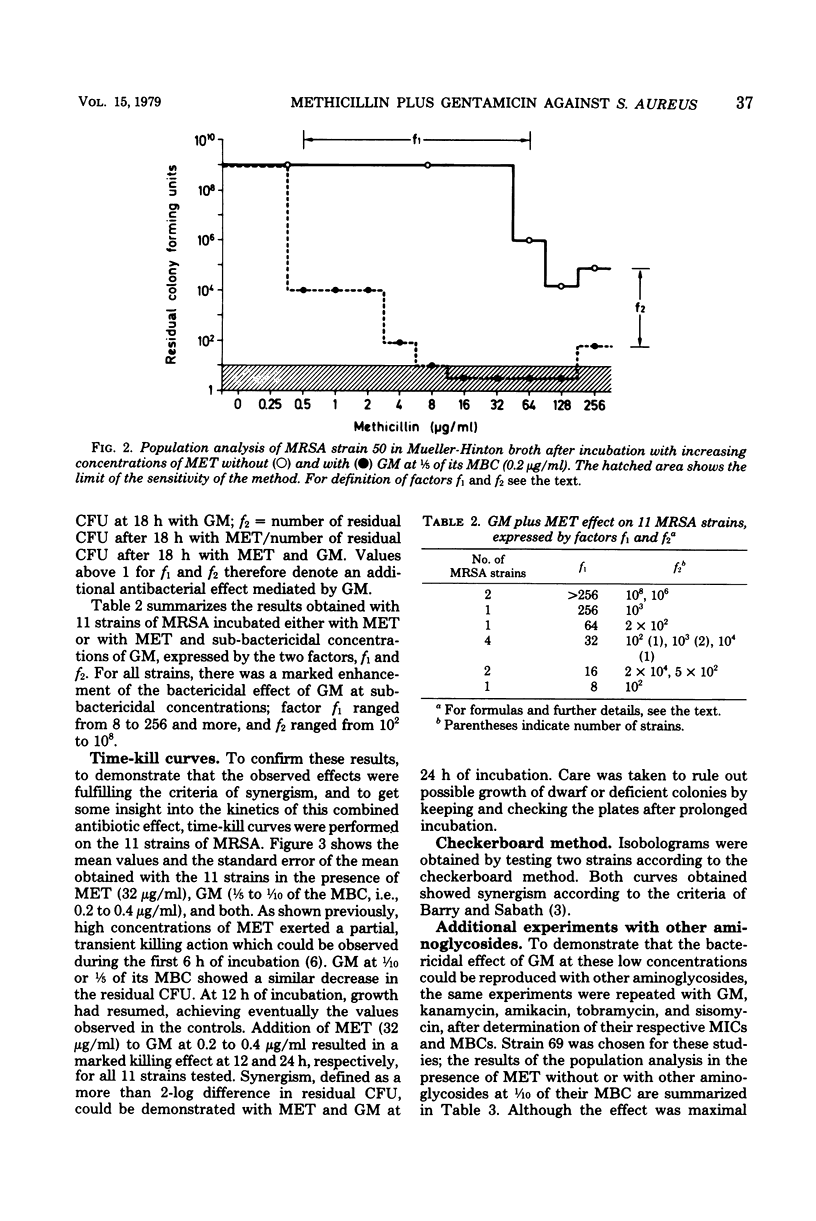
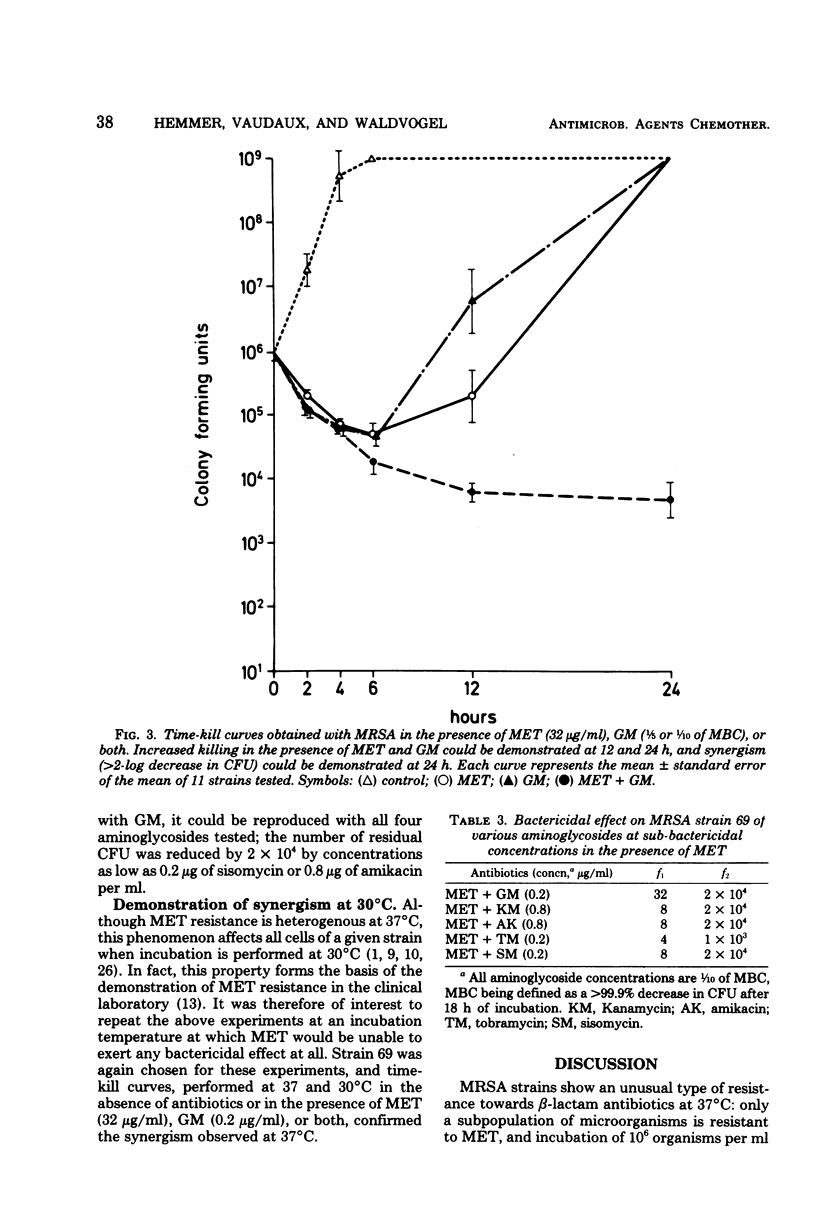
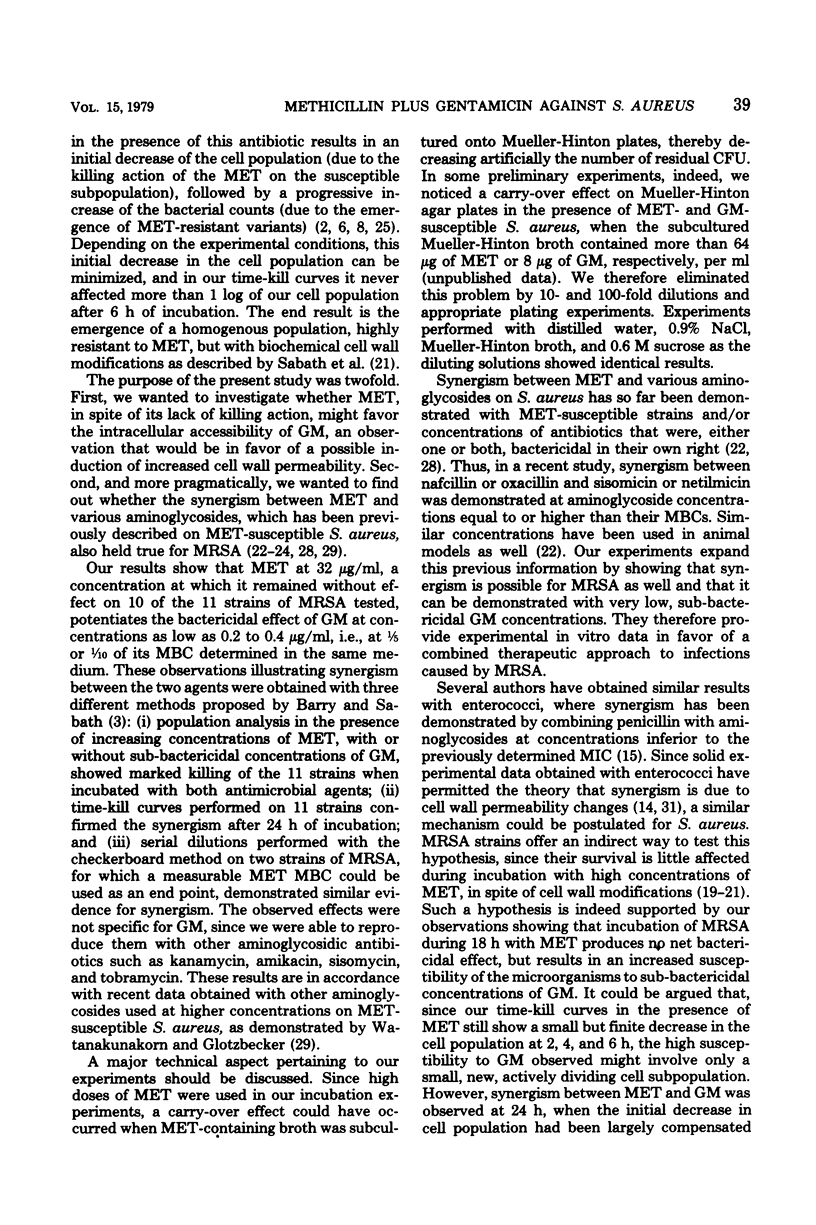
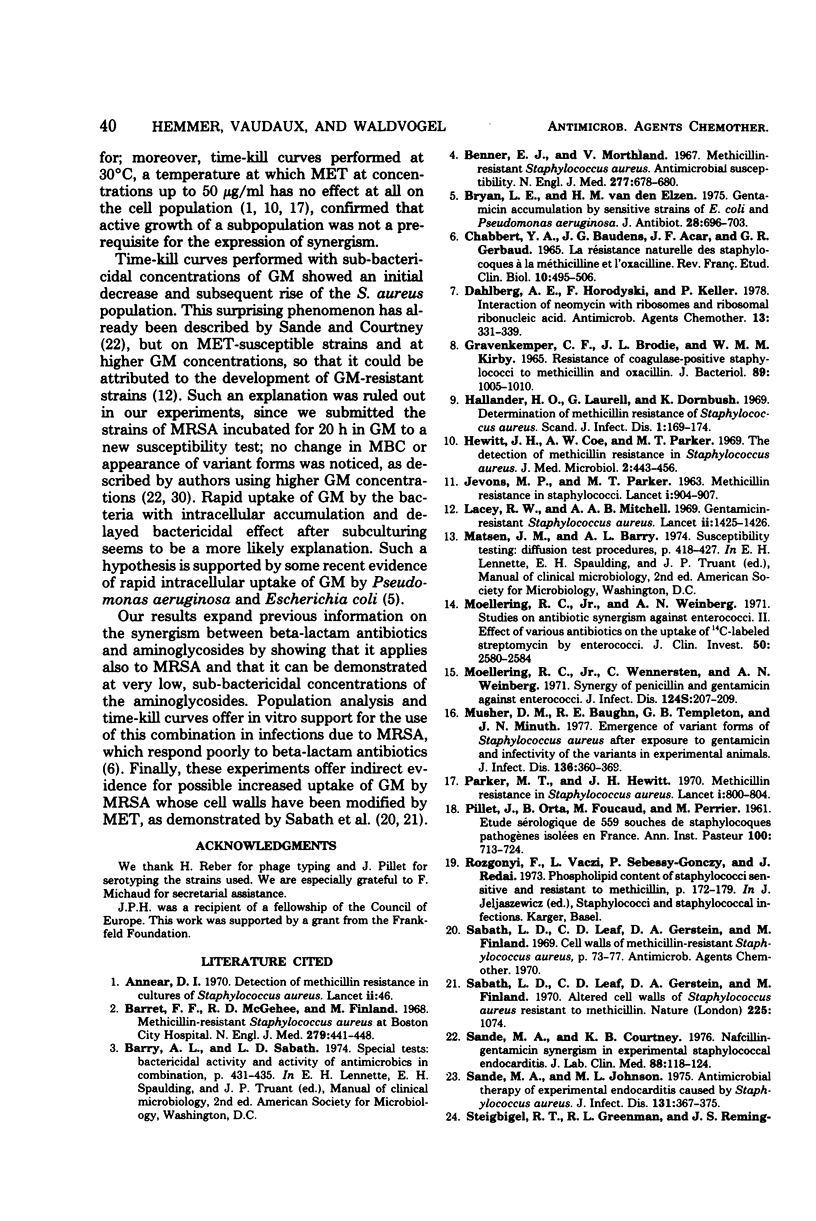
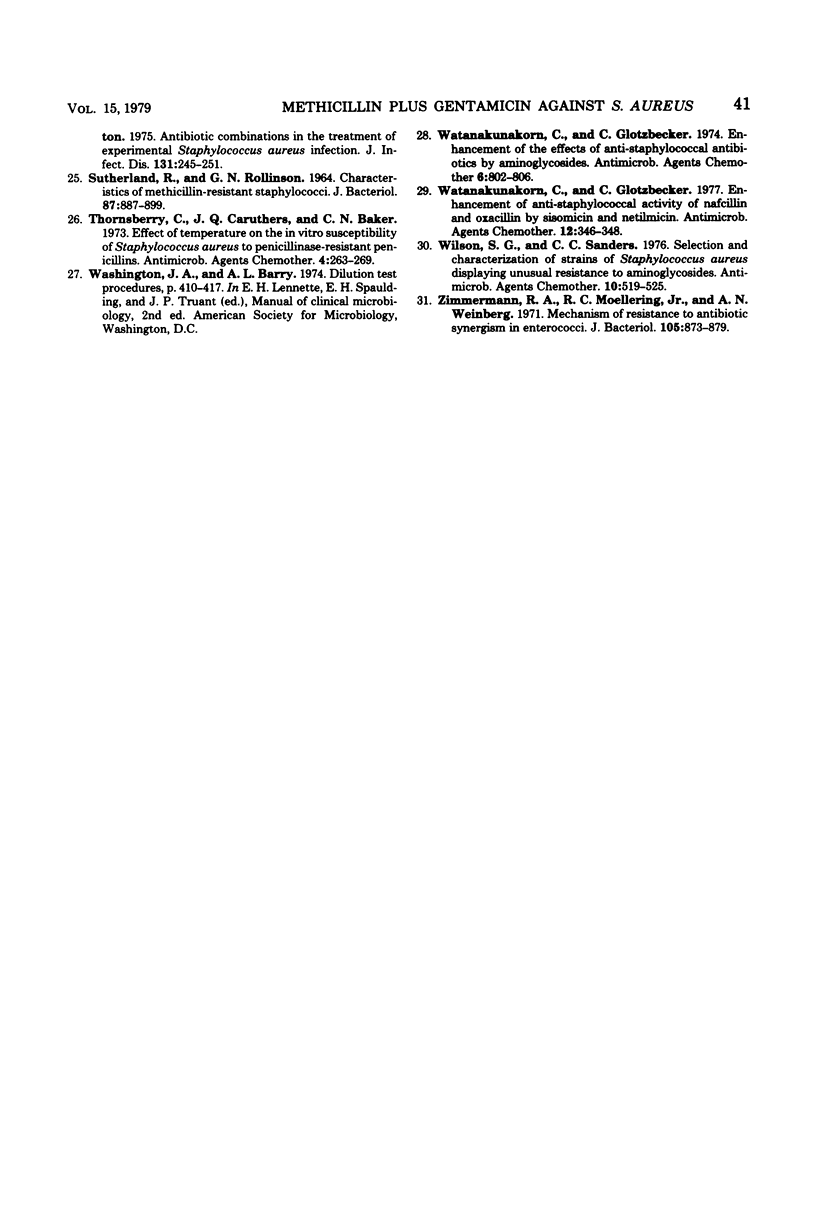
Selected References
These references are in PubMed. This may not be the complete list of references from this article.
- Annear D. I. Detection of methicillin resistance in cultures of Staphylococcus aureus. Lancet. 1970 Jul 4;2(7662):46–46. doi: 10.1016/s0140-6736(70)92511-0. [DOI] [PubMed] [Google Scholar]
- Barrett F. F., McGehee R. F., Jr, Finland M. Methicillin-resistant Staphylococcus aureus at Boston City Hospital. Bacteriologic and epidemiologic observations. N Engl J Med. 1968 Aug 29;279(9):441–448. doi: 10.1056/NEJM196808292790901. [DOI] [PubMed] [Google Scholar]
- Benner E. J., Morthland V. Methicillin-resistant Staphylococcus aureus. Antimicrobial susceptibility. N Engl J Med. 1967 Sep 28;277(13):678–680. doi: 10.1056/NEJM196709282771303. [DOI] [PubMed] [Google Scholar]
- Bryan L. E., Van Den Elzen H. M. Gentamicin accumulation by sensitive strains of Escherichia coli and Pseudomonas aeruginosa. J Antibiot (Tokyo) 1975 Sep;28(9):696–703. doi: 10.7164/antibiotics.28.696. [DOI] [PubMed] [Google Scholar]
- Chabbert Y. A., Baudens J. G., Acar J. F., Gerbaud G. R. La résistance naturelle des staphylocoques à la méthicillin et l'oxacilline. Rev Fr Etud Clin Biol. 1965 May;10(5):495–506. [PubMed] [Google Scholar]
- Dahlberg A. E., Horodyski F., Keller P. Interaction of neomycin with ribosomes and ribosomal ribonucleic acid. Antimicrob Agents Chemother. 1978 Feb;13(2):331–339. doi: 10.1128/aac.13.2.331. [DOI] [PMC free article] [PubMed] [Google Scholar]
- GRAVENKEMPER C. F., BRODIE J. L., KIRBY W. M. RESISTANCE OF COAGULASE-POSITIVE STAPHYLOCOCCI TO METHICILLIN AND OXACILLIN. J Bacteriol. 1965 Apr;89:1005–1010. doi: 10.1128/jb.89.4.1005-1010.1965. [DOI] [PMC free article] [PubMed] [Google Scholar]
- Hallander H. O., Laurell G., Dornbusch K. Determination of methicillin resistance of Staphylococcus aureus. Heterogeneity and its influence on the disc diffusion method. Scand J Infect Dis. 1969;1(3):169–174. [PubMed] [Google Scholar]
- Hewitt J. H., Coe A. W., Parker M. T. The detection of methicillin resistance in Staphylococcus aureus. J Med Microbiol. 1969 Nov 4;2(4):443–456. doi: 10.1099/00222615-2-4-443. [DOI] [PubMed] [Google Scholar]
- Lacey R. W., Mitchell A. A. Gentamicin-resistant Staphylococcus aureus. Lancet. 1969 Dec 27;2(7635):1425–1426. doi: 10.1016/s0140-6736(69)90967-2. [DOI] [PubMed] [Google Scholar]
- Moellering R. C., Jr, Weinberg A. N. Studies on antibiotic syngerism against enterococci. II. Effect of various antibiotics on the uptake of 14 C-labeled streptomycin by enterococci. J Clin Invest. 1971 Dec;50(12):2580–2584. doi: 10.1172/JCI106758. [DOI] [PMC free article] [PubMed] [Google Scholar]
- Musher D. M., Baughn R. E., Templeton G. B., Minuth J. N. Emergence of variant forms of Staphylococcus aureus after exposure to gentamicin and infectivity of the variants in experimental animals. J Infect Dis. 1977 Sep;136(3):360–369. doi: 10.1093/infdis/136.3.360. [DOI] [PubMed] [Google Scholar]
- PILLET J., ORTA B., FOUCAUD M., PERRIER M. [Serological study of 559 strains of pathogenic staphylococci isolated in France. Distribution and relative incidence of the different types]. Ann Inst Pasteur (Paris) 1961 Jun;100:713–724. [PubMed] [Google Scholar]
- Parker M. T., Hewitt J. H. Methicillin resistance in Staphylococcus aureus. Lancet. 1970 Apr 18;1(7651):800–804. doi: 10.1016/s0140-6736(70)92408-6. [DOI] [PubMed] [Google Scholar]
- Rozgonyi F., Váczi L., Sebessy-Gönczy P., Rédai I. Phospholipid content of staphylococci sensitive and resistant to methicillin. Contrib Microbiol Immunol. 1973;1:172–179. [PubMed] [Google Scholar]
- SUTHERLAND R., ROLINSON G. N. CHARACTERISTICS OF METHICILLIN-RESISTANT STAPHYLOCOCCI. J Bacteriol. 1964 Apr;87:887–899. doi: 10.1128/jb.87.4.887-899.1964. [DOI] [PMC free article] [PubMed] [Google Scholar]
- Sabath L. D., Leaf C. D., Gerstein D. A., Finland M. Altered cell walls of Staphylococcus aureus resistant to methicillin. Nature. 1970 Mar 14;225(5237):1074–1074. doi: 10.1038/2251074a0. [DOI] [PubMed] [Google Scholar]
- Sabath L. D., Leaf C. D., Gerstein D. A., Finland M. Cell walls of methicillin-resistant Staphylococcus aureus. Antimicrob Agents Chemother (Bethesda) 1969;9:73–77. [PubMed] [Google Scholar]
- Sande M. A., Courtney K. B. Nafcillin-gentamicin synergism in experimental staphylococcal endocarditis. J Lab Clin Med. 1976 Jul;88(1):118–124. [PubMed] [Google Scholar]
- Sande M. A., Johnson M. L. Antimicrobial therapy of experimental endocarditis caused by Staphylococcus aureus. J Infect Dis. 1975 Apr;131(4):367–375. doi: 10.1093/infdis/131.4.367. [DOI] [PubMed] [Google Scholar]
- Thornsberry C., Caruthers J. Q., Baker C. N. Effect of temperature on the in vitro susceptibility of Staphylococcus aureus to penicillinase-resistant penicillins. Antimicrob Agents Chemother. 1973 Sep;4(3):263–269. doi: 10.1128/aac.4.3.263. [DOI] [PMC free article] [PubMed] [Google Scholar]
- Watanakunakorm C., Glotzbecker C. Enhancement of the effects of anti-staphylococcal antibiotics by aminoglycosides. Antimicrob Agents Chemother. 1974 Dec;6(6):802–806. doi: 10.1128/aac.6.6.802. [DOI] [PMC free article] [PubMed] [Google Scholar]
- Watanakunakorn C., Glotzbecker C. Enhancement of antistaphylococcal activity of nafcillin and oxacillin by sisomicin and netilmicin. Antimicrob Agents Chemother. 1977 Sep;12(3):346–348. doi: 10.1128/aac.12.3.346. [DOI] [PMC free article] [PubMed] [Google Scholar]
- Wilson S. G., Sanders C. C. Selection and characterization of strains of Staphylococcus aureus displaying unusual resistance to aminoglycosides. Antimicrob Agents Chemother. 1976 Sep;10(3):519–525. doi: 10.1128/aac.10.3.519. [DOI] [PMC free article] [PubMed] [Google Scholar]
- Zimmermann R. A., Moellering R. C., Jr, Weinberg A. N. Mechanism of resistance to antibiotic synergism in enterococci. J Bacteriol. 1971 Mar;105(3):873–879. doi: 10.1128/jb.105.3.873-879.1971. [DOI] [PMC free article] [PubMed] [Google Scholar]


